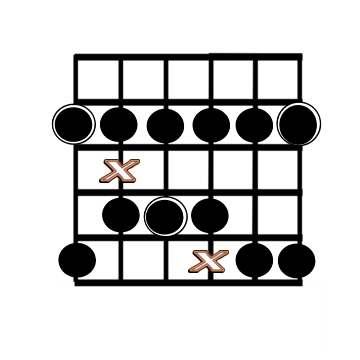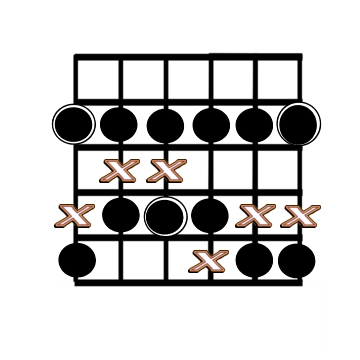VARIATIONS ON THE MINOR PENTATONIC
VARIATIONS ON THE MINOR PENTATONIC
In the last lesson we likened 5 note Pentatonic scales to “skeletons” of the original 7 note scales.
This guy represents a 7 note Minor scale. (His name is the Natural Minor Scale– we’ll learn all about him later.)
Here is his 5 note Pentatonic “skeleton”. It’s still the same guy/scale-there’s just less of him.
Let’s say the guy (Natural Minor scale) contains the notes: A B C D E F G (A)
His skeleton uses 5 notes to give the basic form of the scale: A C D E G (A)
SO… Anytime we can use a full 7 note scale, we can always substitute the 5 note pentatonic skeleton.
But what if we tried to go all mad scientist on this poor guy’s skeleton??? What if we added another bone (note) or two? It wouldn’t be too much different from the Pentatonic skeleton, but it would be vastly different from the original guy/ scale…
Minor Pentatonic is interchangeable with Natural Minor. All the notes agree. But when we add in foreign notes, they aren’t found in the original body scale. These oddball additions are referred to as passing tones. Because they aren’t technically correct, they sometimes have a “brash“ effect. Listeners are quick to pick up on these deviations because they vary from the overall scale and “feel” of a song.
Many styles of music use passing tones. We’ll also learn about other scales incorporating passing tones to create new and unique sounds.
Probably the most commonly used scale that contains passing tones is the “Blues Scale“. The Blues Scale is essentially the Minor Pentatonic with one passing note added per octave. I’ve marked the passing tones with an “X”. Remember to play these! It’s no longer a pentatonic scale because it has more than five notes. Here is the pattern (remember to use the four finger block!):
Here is the Blues Scale in the Key of X:
What if we try to attach even more bones/notes? We can add notes to the Blues Scale and come up with a scale that doesn’t really have a name. I call it the BWPT (Blues with passing tones):
It’s not as difficult as it first appears. There are only two fingerings to play this scale- index, ring & pinky or index middle and ring. Guitarists like this shape because of it’s symmetry. It is easier to play across the strings if the pattern stays the same. Try this simple exercise using the first three strings:




